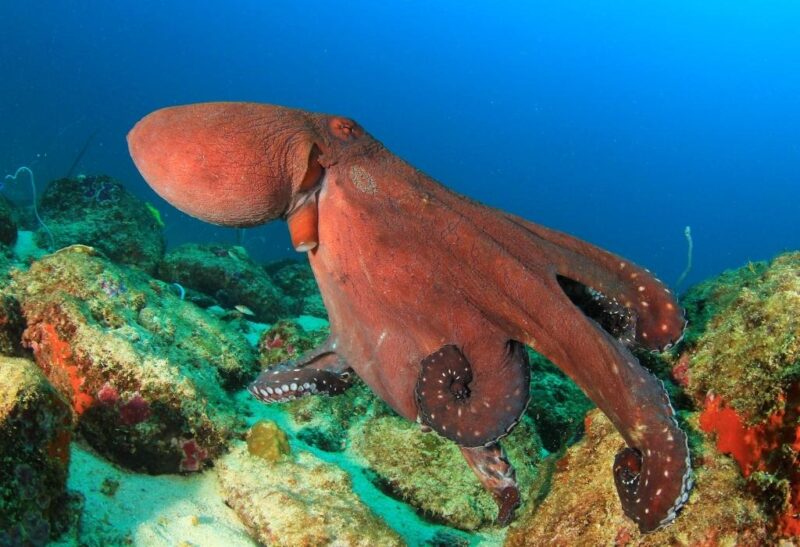Octopus is a carnivorous invertebrate. They belong to the class of cephalopods that prey on a variety of sea creatures, such as lobsters, crabs, sea slugs, snails, mussels, clams, and fish.
As sea predators, one would naturally be curious about how they eat and what mouthparts they have—whether they have beaks like squids or their relatives.
So, do octopus have beaks? Octopus has beaks. They’re made of chitin and proteins, which make them tough enough to break into shells of crustaceans, mollusks, and other prey. Depending on the octopus species and size, they can range from 2 millimeters to 4.5 millimeters in length.
This article will provide you with everything you need to know about the body parts and their corresponding functions of octopuses, their beak composition and specific parts, and how they eat.
Table of Contents
Anatomy of an Octopus
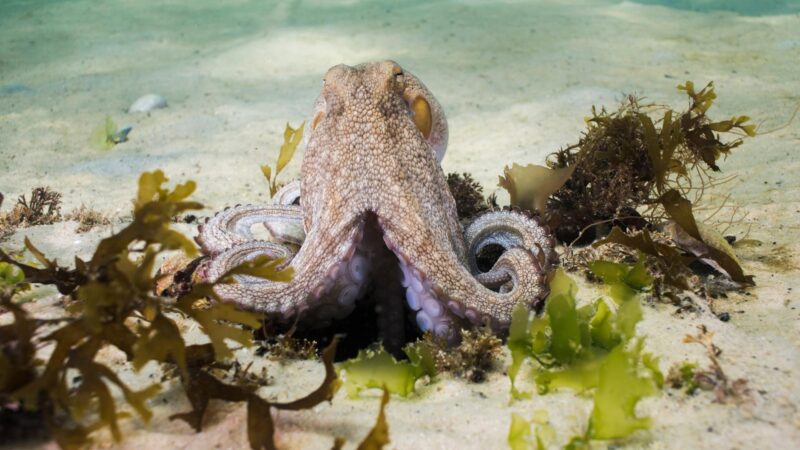
Body
An octopus’s body is called a mantle and is shaped like a bag. It contains organs such as the stomach, liver, intestine, kidneys, reproductive organs, 3 hearts, and the central brain. Their outer bodies lack external shells, a trait they share with squids and cuttlefish.
Like other cephalopods, octopuses have chromatophores, which are bag-like structures filled with pigment. This allows them to change color rapidly and camouflage in their environments or for social interaction.
Eyes
Their eyes are structured similarly to humans. They have two eyes, each with a pupil (albeit rectangular-shaped), an iris, lens, and a protected cornea which helps them see in water without direct contact with it.
Since octopuses only have 1 photoreceptor, they are colorblind and can only see in black and white. However, they have excellent eyesight that can detect prey accurately even in deep water.
Arms
It is important to note that while all cephalopods have arms, not all of them have tentacles. Octopuses, in particular, have 8 non-retractable limbs, which are biologically called arms, not tentacles.
Each arm has 2 rows of suction cups that fully cover the entire length of the arm and are responsible for touching and tasting. Male octopuses have an extra arm called a hectocotylus which is specialized for holding and delivering sperm to female octopuses.
Found on each arm is a rudimentary or “mini” brain that takes in environmental sensory information without needing to consult the central brain. This gives them the advantage to react to and processing stimuli faster than other animals.
Hearts
Octopuses have 3 hearts, 2 of which are referred to as branchial hearts, and 1 is called the systemic heart.
The branchial hearts, located next to the gills, pump blood through the gills. Then, the systemic heart transports it to the rest of the body.
If one of the octopus branchial hearts fails, the octopus could still survive, but they can’t use the gills where the failed heart is located anymore. Octopuses could remedy this by breathing through their skin. On the other hand, octopuses can’t survive without a systemic heart.
Brain
The central brain can be found between the octopus’s eyes and houses the nervous system responsible for determining the octopus’s needs, such as when looking for food.
It will then command the arms’ rudimentary brains to gather relevant data based on the instructions given by the central brain, then send it back to the central brain for decision-making.
Octopuses are one of the smartest invertebrates inhabiting the planet. They can solve puzzles, most often involving food as a reward. They can also escape tanks and slither back into the ocean.
Mouth
An octopus mouth is found on its underside, at the center where all of its 8 arms meet. It has a beak resembling a parrot, which is used to bite and hold prey.
There are also salivary glands inside the octopus’s mouth which secretes venom used to paralyze prey. At the end of each salivary gland is a set of teeth that are drill-shaped and are used to bore holes into prey when necessary.
Stomach
Octopuses also have an esophagus, which is a tube structure that transports food from their mouths to their stomachs.
Since their stomachs are located in their mantle, their esophagus will stretch out into and outwards of the brain to pull food eaten by the octopus into the stomach.
Siphon
A tube-shaped component is located near the base of the body or mantle area. It is responsible for the octopus respiration as water flows into its gills and then ejected out of the siphon. As such, it acts as a funnel that propels the octopus into the water, helping it swim and maneuver.
The ink sac is near the siphon, specifically located between its gills. It is usually triggered and released by fear out of the siphon. The ink is a mix of ink and mucus substances.
When faced by a predator, octopuses will use the siphon as jet propulsion to travel away and to release ink so that their attackers are momentarily unable to see.
Is an Octopus Beak a Bone?
Beaks aren’t made of the same components as bones. Instead, they are composed of chitin, which is the same material that makes up the exoskeletons of arthropods such as insects and crustaceans.
What Is the Size of an Octopus Beak?
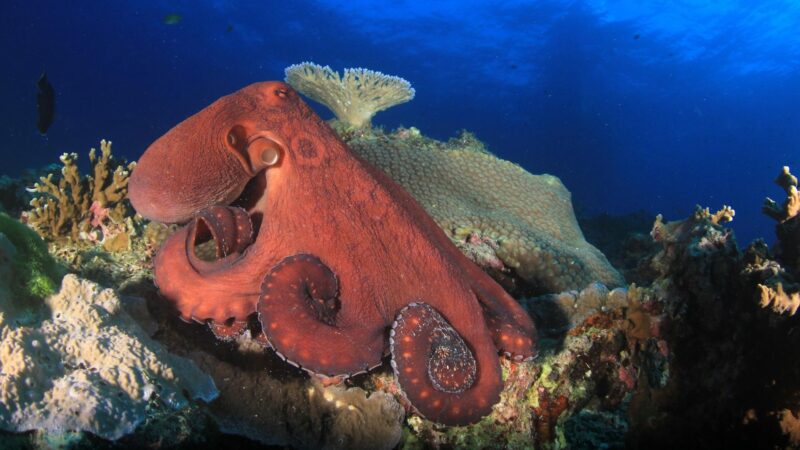
Depending on the size and species of the octopus, their beaks can range from 2 millimeters to 4.5 millimeters. Octopuses can fit into openings and spaces that their beaks can fit through.
Composition of an Octopus Beak
Octopus beaks are made up of chitin fibers and proteins, which are rich in glycine and histidine. They are practically indigestible materials due to their tough composition.
What Are the Parts of an Octopus Beak?
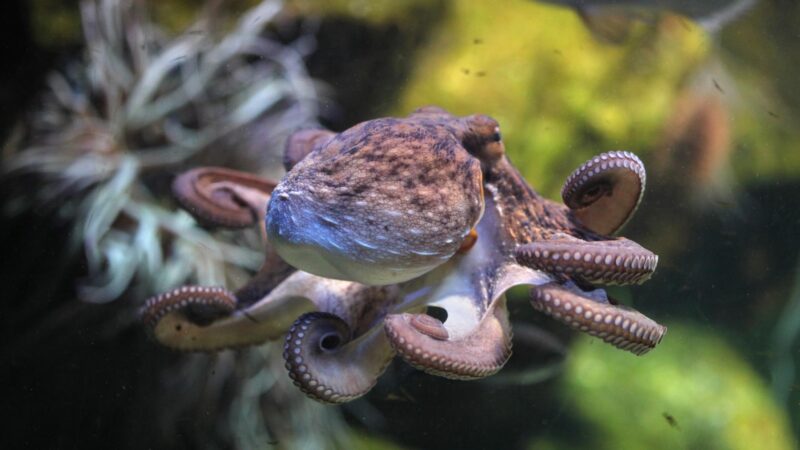
Making up an octopus beak is the upper and lower beaks. It is found in the buccal mass, a spherical-shaped structure at the center of the body where the arms meet.
The upper beak has a sharp rostrum (referring to the pointy tip) and a more pronounced hood shape, while the lower beak has a rounded rostrum and jaw angle. Both beaks are attached by mandibular muscles, which open and close the beak in a scissor-like way.
Inside the beak is a tongue-like structure called the radula, which contains small teeth-like structures used to scrape prey, specifically those that have shells such as mollusks and crustaceans.
Below the radula are the salivary glands, specifically the salivary papillae, which are muscles that also contain tiny teeth used for drilling into prey. The salivary glands also contain venom glands that inject poisonous toxins that paralyze prey.
Are Octopuses’ Beaks Lethal?
Octopuses’ beaks are lethal. This is due to their sharpness which can tear flesh and penetrate the hard shells of other sea animals such as crabs and lobsters. It also contains the venom gland, which is hazardous to most animals but is generally not fatal for humans.
However, the venom of the blue-ringed octopus is considered lethal for humans since it is made up of a neurotoxin called tetrodotoxin, a poisonous substance that affects the brain. Thankfully, they are not known to be aggressive species.
Do Octopuses Have Teeth?
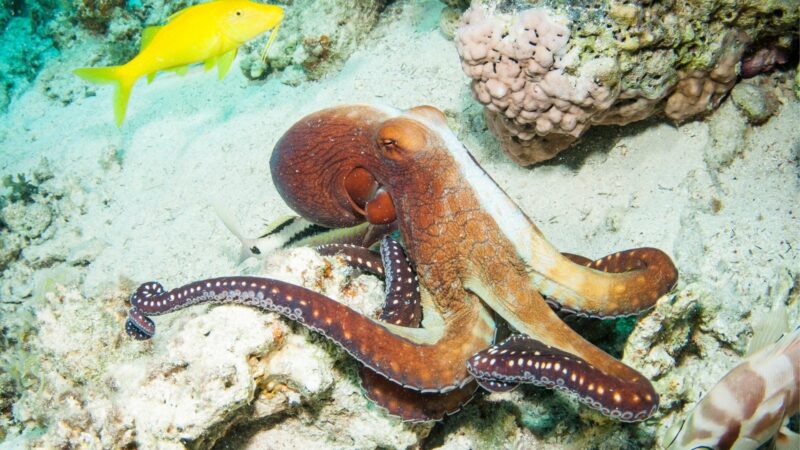
Octopuses don’t have teeth. However, their radula and salivary glands contain small teeth-like structures used to bite and chew prey.
Can an Octopus Beak Hurt You?
An octopus beak can hurt you. Their bites can cause swelling and in worse cases, bleeding, especially if they have larger-sized beaks.
Do Octopuses Attack Humans?
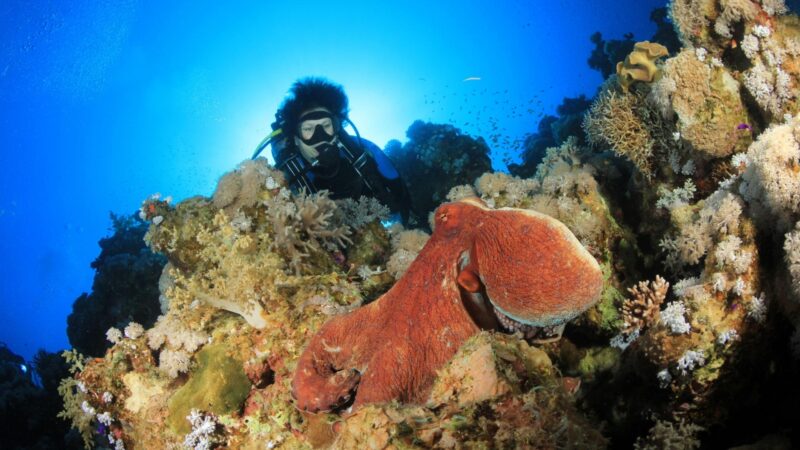
Octopuses do attack humans. However, octopus attacks are rare, but there are reported encounters. They are generally not aggressive towards humans, but if they feel threatened, their defense mechanism is to bite.
Does an Octopus Beak Size Matter?
An octopus’s beak size matters. Their beak measurements and growth patterns are important information used to study and draw relationships on the body length, weight, biomass, and age of octopus species which are then subsequently used for further research.
How Do Octopuses Eat?
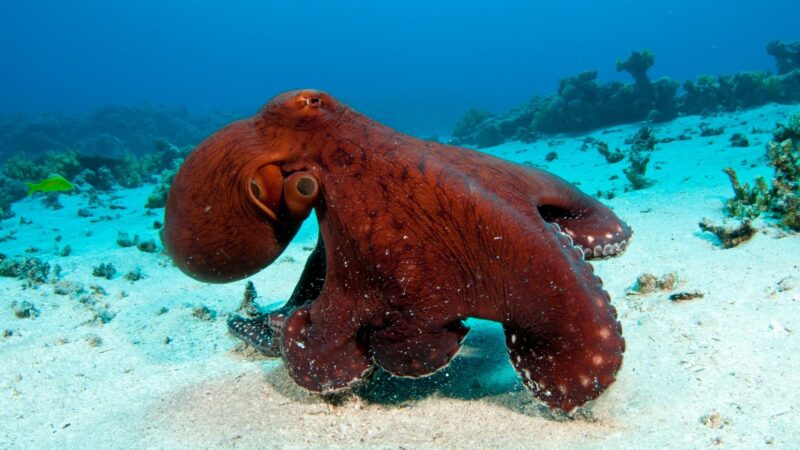
- An octopus will use their siphon first to project water into the ocean floor and wipe away any gravel and sand covering its prey.
- After it discovers potential food sources, they use its arms to feel the ocean floor and process sensory information (touch and taste).
- Once they identify food they want to eat, they use the suckers on their arms to hold prey. They’ll also use their arms to physically pry the shells apart and/or hold the food in place. It then transports food into its mouth using its arms.
- If it catches live prey, the octopus will use its beak to bite the prey and then inject venom to paralyze the voluntary movements of the sea critter.
- When capturing more difficult sea animals, the octopus will use its camouflage abilities to blend with the environment and wait for the prey patiently. Once the prey is nearby, the octopus will snatch it using its arm.
- The octopus releases an enzyme to soften the prey’s muscles and internal organs during digestion. Usually, there will be shell remains that were left uneaten or undigested.
Can You Eat the Beak of an Octopus?
Octopus beaks are inedible. They’re usually removed together with the ink sac and intestines.
Octopuses have beaks they use to capture prey and inject venom to paralyze them. They range from 2.5 millimeters to 4.5 millimeters in length. They don’t have teeth, but rather they have teeth-like structures used to chew and drill into prey.
Their beaks can hurt humans and cause swelling and bleeding. Blue-ringed octopuses can cause human death due to their toxic venom.
List of Sources
What would happen if we had three hearts and one of them stopped? Washington State University.
OctoFAQ. Oregon State University.
Scully, C. (2018). Get To Know the Four Types of Cephalopods. Birch Aquarium at Scripps Institution of Oceanography, UC San Diego.
Spencer, E., Papastamatiou, Y. (2022). What does an octopus eat? For a creature with a brain in each arm, whatever’s within reach. Florida International University.
Stephen, M. (2021). Nine Brains Are Better Than One: An Octopus’ Nervous System. University of Notre Dame.
